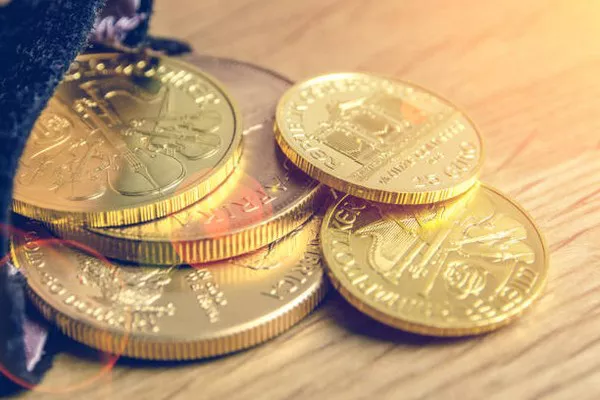Gold, often referred to as the “king of metals,” has held a special allure for humanity throughout history. Its rarity, durability, and aesthetic appeal have made it not just a coveted commodity but also a symbol of wealth and power. Among the various units used to measure gold, the ounce stands out as a standard unit for trading and valuation. In this article, we will delve into the significance of one ounce of gold and explore its value in today’s economic landscape.
What is an Ounce of Gold?
An ounce of gold refers to precisely one avoirdupois ounce of gold, which is equivalent to approximately 28.35 grams. This unit of measurement is widely used in the valuation and trading of gold across the globe. Despite the emergence of digital currencies and other financial instruments, gold remains a fundamental asset in the global economy due to its intrinsic value and historical significance.
Historical Context
Gold has been treasured by civilizations for millennia, with its use dating back to ancient times. From the pharaohs of Egypt to the emperors of Rome, gold has been associated with wealth, prestige, and power. Its scarcity and malleability made it ideal for crafting jewelry, ornaments, and ceremonial objects.
Modern Applications
In addition to its historical and cultural significance, gold plays a vital role in modern finance and industry. Beyond its use in jewelry and luxury items, gold is utilized in various sectors, including electronics, dentistry, and aerospace. Its conductivity, corrosion resistance, and biocompatibility make it indispensable in many technological applications.
Determining the Value of One Ounce of Gold
The value of one ounce of gold fluctuates based on several factors, including supply and demand dynamics, geopolitical events, economic indicators, and investor sentiment. Gold is traded on various exchanges worldwide, with prices quoted in major currencies such as the US dollar, euro, and yen.
Market Forces
Like any other commodity, the price of gold is influenced by market forces of supply and demand. When demand for gold exceeds supply, prices tend to rise, and vice versa. Factors such as central bank policies, inflationary pressures, and geopolitical tensions can impact both supply and demand for gold.
Investment Demand
Gold is often viewed as a safe-haven asset during times of economic uncertainty or market volatility. Investors flock to gold as a store of value and a hedge against inflation and currency depreciation. Exchange-traded funds (ETFs), futures contracts, and physical bullion are popular investment vehicles for gaining exposure to gold prices.
Industrial Demand
In addition to its role as a financial asset, gold has numerous industrial applications across various sectors. The electronics industry, in particular, relies heavily on gold for its conductivity and corrosion resistance properties. Demand from industries such as healthcare, aerospace, and telecommunications also contributes to the overall demand for gold.
Current Market Trends
As of [current date], the price of gold stands at [current price] per ounce, reflecting [current market conditions]. Gold prices have experienced volatility in recent months, driven by factors such as [key market drivers]. Analysts forecast continued uncertainty in the global economy, which could support demand for gold as a safe-haven asset.
Impact of COVID-19
The COVID-19 pandemic has had a significant impact on the global economy, leading to unprecedented levels of uncertainty and volatility in financial markets. In times of crisis, investors tend to seek refuge in assets perceived as safe havens, such as gold. The pandemic has underscored the importance of gold as a diversification tool and a store of value.
Central Bank Policies
Central banks play a crucial role in influencing the price of gold through their monetary policies and reserve management strategies. In recent years, central banks have been net buyers of gold, adding to their reserves as a form of portfolio diversification and risk management. This trend is expected to continue as central banks seek to safeguard against currency risks and geopolitical uncertainties.
FAQs
1. Is gold a good investment?
Gold can serve as a hedge against inflation and currency depreciation, making it a valuable addition to an investment portfolio. However, like any other asset, gold carries risks, and its price can be volatile in the short term. Investors should carefully assess their investment objectives and risk tolerance before allocating capital to gold.
2. How is the price of gold determined?
The price of gold is determined by supply and demand dynamics in the global marketplace. Factors such as central bank policies, economic indicators, geopolitical events, and investor sentiment influence gold prices. Gold is traded on various exchanges worldwide, with prices quoted in major currencies such as the US dollar, euro, and yen.
3.What are the different ways to invest in gold?
Investors can gain exposure to gold through various investment vehicles, including physical bullion, ETFs, futures contracts, and mining stocks. Each investment option carries its own risks and potential rewards, depending on factors such as liquidity, cost, and taxation. Investors should carefully evaluate their investment goals and preferences before choosing a gold investment strategy.
See Also Why Did Gold Crash Today? 4 Factors
In conclusion
One ounce of gold holds both historical significance and practical value in today’s economic landscape. As a tangible asset with intrinsic qualities, gold continues to play a vital role as a store of value, a diversification tool, and a hedge against economic uncertainty. Whether as a symbol of wealth and prestige or as a strategic investment, gold remains an enduring asset class for investors worldwide.


